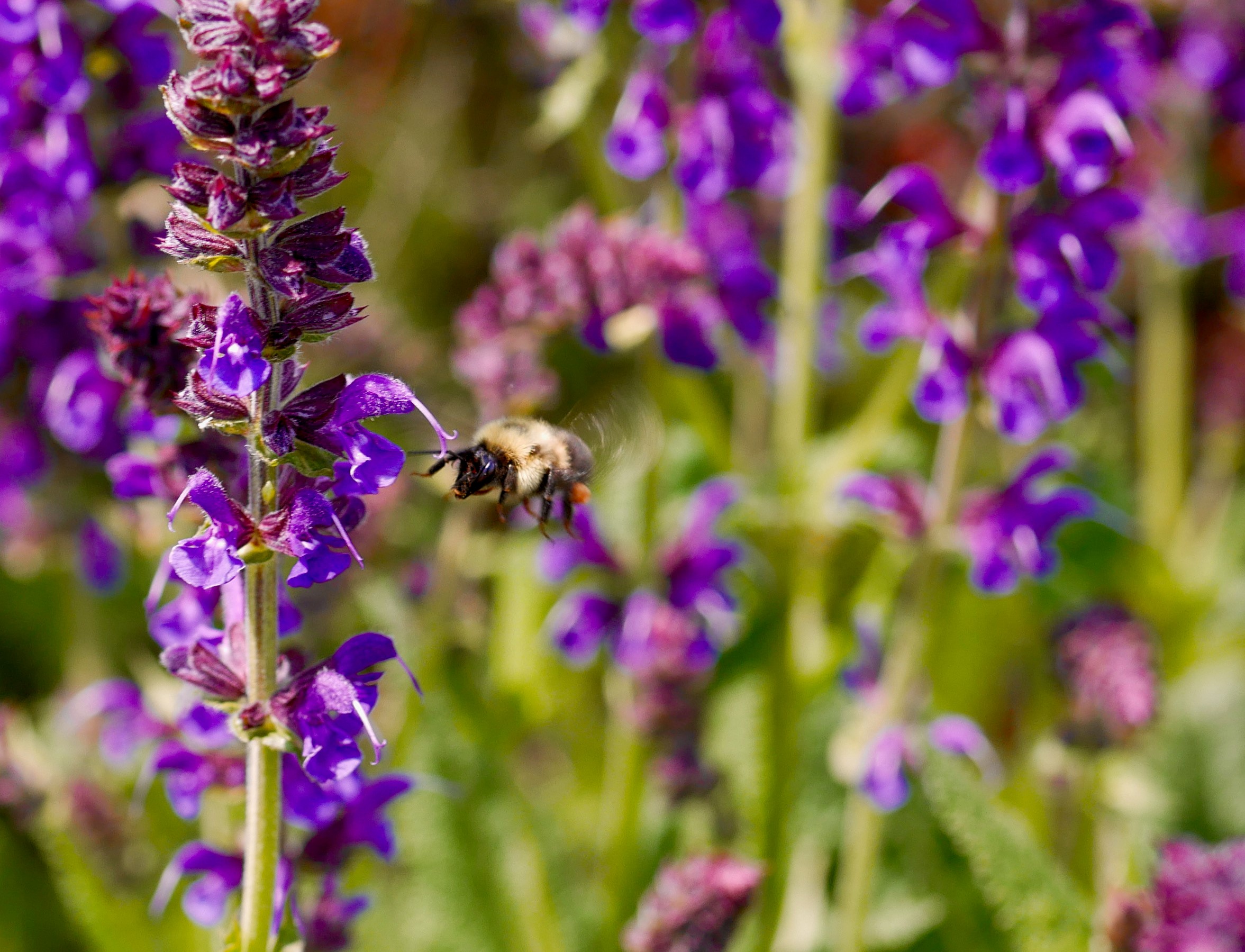Save the bees! Many of us have said this phrase with conviction. Many of us applaud or nod in support when we hear or read it.
The popular phrase often goes along with encouragement to plant flowers that pollinators thrive on, or stop mowing flowers along road sides, or stop use of certain pesticides and herbicides. When we say “bee” in these (and other) contexts we typically refer to honeybees.
Honeybees are amazing, fascinating creatures. I’ve learned more about them lately. They are great pollinators and although not native to America, definitely deserve saving, in my opinion.
Whenever I say something along the lines of “save the bees” I feel a nag of curiosity about bees other than honeybees. Turns out there are over 4,000 species of bees native to North America — and over 20,000 known species of bees worldwide.
The United States Geological Survey (usgs.gov) estimates about 10% of North American bees have yet to be named or described.
In our area, there are probably about 500 species of native bees. That might sound like a lot of bees — but development and destruction of their complex habitat has made their numbers crash.
Many native bees are particularly vulnerable because they either rely on or have a very strong preference for specific plants — if those plants are destroyed, the bees can’t sustain their population. According to the USGS about 20%-45% of native bees are specialists, relying on the pollen of one type of plant).
You can fill your yard or garden with native bee-attracting plants with little fear of increased chances of getting stung — most native bees don’t sting.
Only bumble bees sting to defend their nests. The many other native bees are either solitary or simply don’t defend their nests.
On the subject of bumblebees — I have taken particular enjoyment watching these fuzzy pollinators this year. They have been a regular garden companion since my childhood.
Although I’ve never been stung by one, my mother was, once — she accidentally dug into their nest while gardening, but only got one sting. So I maintain these are pretty gentle creatures.
Like bumblebees, many native bees nest in the ground. Carpenter bees are the largest North American bee with Perdita minima on the other end of the spectrum as the smallest bee measuring in at less than two millimeters long.
Important flowers for native bees include blueberries, deerberries, winterberry and other native hollies, evening primrose, asters, coneflowers, ironweed, goldenrod, thistle, manroot, willow, blackeyed Susans, ragwort, annual and perennial sunflowers and verbena. These are just a few that specialized bees need.
Preserving bee places in our ecosystem is important not only for diversity and sustainability of flowers, but also for our crops. While honeybees are needed to pollinate almond and lemon trees in particular, native bees pollinate many other crops including cherries, blueberries, cranberries, squash, tomatoes, peppers, strawberries and more.




